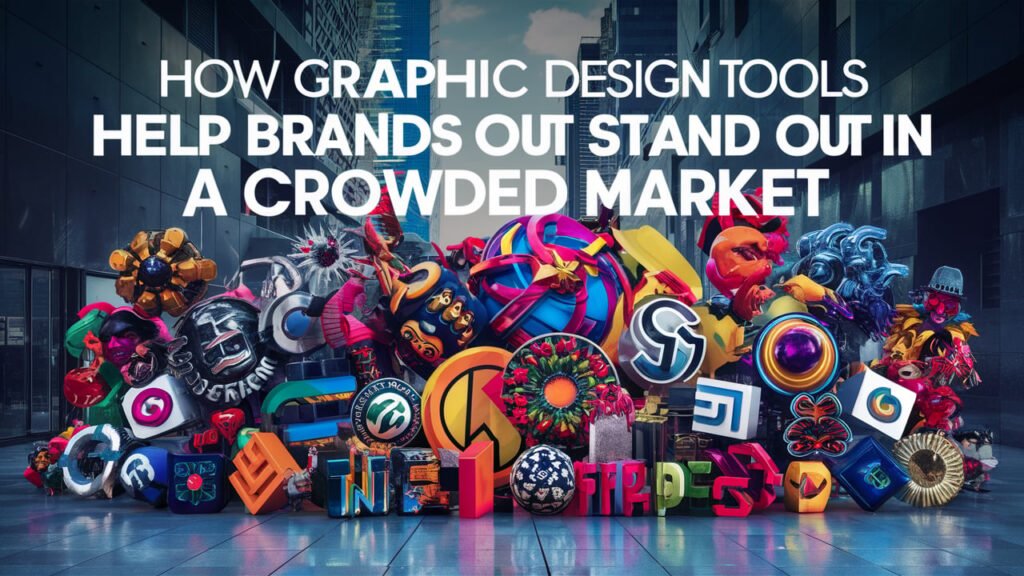In today’s digital era, where countless brands strive for consumer attention, standing out in a crowded market has never been more challenging. The key to differentiation often lies in effective visual branding, wherein graphic design tools play a pivotal role. This blog delves into how graphic design tools can elevate your brand presence, ensuring it doesn’t just blend into the background but captures and holds consumer attention.
🖼️ The Importance of Visual Branding in a Competitive Landscape
Visual branding is the embodiment of your brand’s identity through visual elements such as logos, colors, typography, and overall design aesthetics. It creates a lasting first impression, communicates your brand values, and distinguishes your brand from competitors. A well-crafted visual brand identity can be the deciding factor for consumers when choosing between similar products or services.
🎨 How Graphic Design Tools Elevate Brand Identity
1. Enhancing Brand Recognition
Graphic design software like Adobe Photoshop, Illustrator, and Canva allows brands to maintain visual consistency across all marketing platforms. Uniformity in visual elements—such as logos, business cards, social media posts, and advertisements—reinforces brand recognition and fosters consumer trust.
2. Creating Emotional Connections
Effective design tools help in crafting compelling visuals that can evoke emotions, making consumers feel connected to your brand. Tools that enable illustrations, animations, and creative video content can significantly enhance the emotional appeal of your brand’s messaging.
3. Customization and Personalization
Using advanced design tools for marketing, brands can easily customize designs to suit different target audiences and campaigns. The flexibility to tweak visual details ensures that the design reflects the brand’s personality and speaks directly to specific consumer segments.
🔑 Key Graphic Design Tools for Standout Branding
1. Adobe Creative Cloud Suite
Adobe’s range of tools, including Photoshop, Illustrator, and InDesign, are industry standards for creating high-quality visual content. Their advanced features and cross-platform integrations make them indispensable for professional designers.
2. Canva
Canva is a user-friendly graphic design platform that provides a plethora of templates and design elements. It’s ideal for brands looking to create professional-looking visuals without extensive design expertise.
3. Sketch and Figma
For designing user interfaces and web-based visuals, Sketch and Figma offer collaborative tools that streamline the design process, making them perfect for teams working on brand websites and apps.
4. CorelDRAW
CorelDRAW is a powerful vector design software that is particularly useful for detailed illustrations, logo designs, and complex typography, suitable for creating unique brand visuals.
🚀 Strategies to Stand Out with Graphic Design
1. Consistent and Coherent Brand Identity
Developing a brand style guide that outlines the use of logos, color schemes, fonts, and imagery ensures that all visual content remains consistent and aligned with the brand’s identity.
2. Staying Abreast with Design Trends
Keeping up with the latest design trends can give your brand a modern edge. Trends such as minimalism, bold color palettes, and dynamic animations can make your brand appear contemporary and relevant.
3. High-Quality Visual Content
Investing in high-quality visuals can significantly impact consumer perception. High-resolution images, professional graphics, and well-designed layouts signal that your brand is sophisticated and reliable.
4. Storytelling Through Design
Using visual storytelling to convey your brand’s message can make your content more engaging. Infographics, visual narratives, and interactive designs can tell your brand story in a compelling and memorable way.
5. Leveraging Social Media Platforms
Social media is a powerful platform for visually engaging with your audience. Using tailored graphics, videos, and interactive content can boost brand visibility and engagement on platforms like Instagram, Facebook, and Pinterest.
📊 Measuring the Impact of Visual Branding
1. Brand Recall Surveys
Conduct surveys to assess how well your audience remembers and recognizes your brand visuals. This can provide direct feedback on the effectiveness of your design elements.
2. Engagement Metrics
Monitor social media engagement metrics such as likes, shares, and comments to gauge how your audience is interacting with your visual content.
3. Conversion Rates
Analyzing conversion rates from campaigns where visual design played a key role can help in understanding the direct impact of graphic design tools on business outcomes.
4. Brand Perception Analytics
Use sentiment analysis tools to assess consumer perception of your brand based on your visual strategies. Positive sentiments can be a good indicator of effective visual branding.
🏁 Conclusion
In a market where attention spans are fleeting and competition is fierce, graphic design tools are indispensable in building a distinctive and memorable brand identity. By leveraging these tools and strategic visual elements, brands can not only stand out but also foster lasting connections with their audience. Embrace the power of visual branding and watch your brand reach new heights.
For more insights and resources on branding and marketing strategies, visit our blog.









